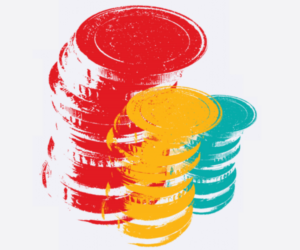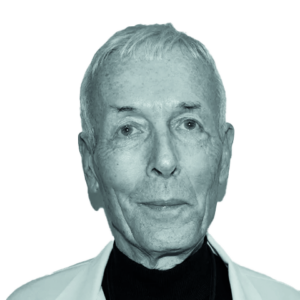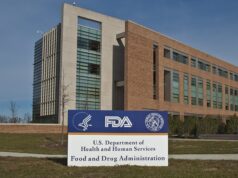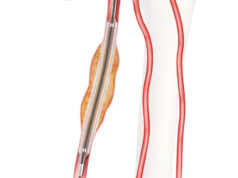 In a paper published in the July 2024 issue of the Journal of Hypertension, Andrew Sharp (University Hospital of Wales and Cardiff University, Cardiff, UK) et al reviewed 16 randomised controlled trials to assess the evidence of renal denervation’s (RDN) efficacy, concluding that, in uncontrolled arterial hypertension, RDN leads to a consistent reduction in blood pressure.
In a paper published in the July 2024 issue of the Journal of Hypertension, Andrew Sharp (University Hospital of Wales and Cardiff University, Cardiff, UK) et al reviewed 16 randomised controlled trials to assess the evidence of renal denervation’s (RDN) efficacy, concluding that, in uncontrolled arterial hypertension, RDN leads to a consistent reduction in blood pressure.
Up until now however, RDN had been effectively abandoned, largely due to the influential 2014 SYMPLICITY HTN-3 (Renal denervation in patients with uncontrolled hypertension) trial which found no significant difference between RDN and sham control groups at six-month follow-up. Yet—perhaps supplying the spark for RDN’s revival—in 2022, the Medtronic-sponsored trial published three-year follow-up data which showed that RDN provided a sustained blood pressure reduction benefit for those patients, with the first-generation single-electrode technology.
In Franz Messerlli’s (Saint Luke’s Roosevelt Hospital, New York, USA) view, there are still two groups despite the emerging data—the enthusiasts and the sceptics. “In recent meta-analyses—such as Sharp et al’s—we see a fall of 3.6mm of mercury [mmHg], and

to many of us, this is simply not sufficient to justify an invasive procedure.”
Although, in an accompanying commentary to Sharp and colleagues’ research titled ‘Why the lack of enthusiasm for renal denervation?’ in the July issue of the Journal of Hypertension, Messerli asserts that the authors “correctly conclude” that RDN leads to consistent blood pressure lowering. Messerli however, took issue with the authors’ statement that the reduction of systolic blood pressure of 2mmHg was associated with a 10% reduction in stroke mortality in a middle-aged population, which references the 2002 Sarah Lewington (Nuffield Department of Population Health, Oxford, UK) et al study of age-specific relevance of usual blood pressure to vascular mortality.
“This is a wishful misinterpretation of the Lewington [et al] data,” Messerli writes, “all too commonly misused for marketing drugs with paltry antihypertensive efficacy.” He believes that, due to hypertension’s prevalence as one of the most common cardiovascular diseases worldwide, it has therefore become “a money-making” procedure. “You can simply assume that without industry support, RDN would not survive,” Messerli said. He continued, describing a term he has coined as ‘gizmo idolatry’, stating that the treatment of hypertension—a disease that has been around for centuries—is “absolutely boring”, but with the development of a new device, “there is a new kid on the block—a gizmo”. In his opinion, following this excitement drawn up by recent meta-analyses concerning RDN, clinicians will realise that there is “very little reason” to use the technique except in “selected patients, few and far in between”.
Hypertension leads to stroke, heart attack, heart failure, kidney damage, and several other health problems, particularly in an aging population. As set out in Dena Ettehad (University College London, London, UK) et al’s 2016 data in The Lancet, a reduction of 10mmHg in systolic blood pressure is associated with substantial risk reductions: 28% for heart failure, 27% for stroke, 17% for coronary disease, 5% for chronic kidney failure, and 13% for mortality. Although RDN is commonly believed to reduce blood pressure to the equivalent of one antihypertensive drug, the minimally-invasive procedure can reduce the issue of non-adherence to medication, as often patients are required to take anywhere from one to three types of medication daily.

Mahmood Razavi (Providence St. Joseph Hospital, Orange, USA) commented that compliance with this level of medication is challenging for most. “No one likes to get up every day and take one, two or three medications multiple times daily,” he stated. On top of this, he noted that hypertensive patients will likely have other medical conditions that they will also be taking medication for. He explained that the idea behind RDN was to replace medication with a single procedure, to reduce the frequency or dosage of medication a patient must take, or to treat patients who cannot tolerate antihypertensive drugs.
The incidence of non-adherence to antihypertensive medication could be why the early randomised RDN studies like SYMPLICITY HTN-3 were negative, Razavi stated. “Patient selection is key—this could have been due to patients who were non-compliant with medication and once entered into the trial, received treatment and therefore their blood pressure dropped.” Despite this, Razavi recounted that, of the patients that his centre enrolled into SYMPLICITY HTN-3, they reported “very positive outcomes”, having observed that even in patients on three antihypertensive medications, blood pressure was reduced by 20mmHg following RDN.
Since then, several second-generation RDN trials using multielectrode technology and adjacent ultrasound techniques have been reported to cause a significant reduction in blood pressure compared to sham control groups. Presenting at the 2024 Charing Cross (CX) International Symposium (23–25 April, London, UK), Neelan Das (East Kent Hospitals University NHS Foundation Trust, London, UK)— presenting in a session dedicated to the developing evidence in support of RDN’s return—exemplified the 2023 RADIANCE II trial results as proof of this fact.

Das described the study as the largest trial to compare ultrasound RDN to a sham control. The trial highlighted the statistically significant improvement in blood pressure in patients who were taken off antihypertensive medication for four weeks, with a sustained benefit at night to prevent the deleterious effects of nocturnal hypertension. In November 2023, the Paradise (Recor Medical) RDN system used in the RADIANCE II trial was approved by the US Food and Drug Administration (FDA), followed closely by the Symplicity Spyral RDN system (Medtronic) in the same month.
Then, Das detailed the current European Society of Hypertension (ESH) and UK National Institute of Clinical Excellence (NICE) guidance which suggests RDN should only be used in patients who have resistant hypertension, are intolerant to medications, or are on fewer than three medications. This guidance, however, contrasts the findings of the RADIANCE II trial, he stated, which provided a significant reduction in blood pressure “overall, even without antihypertensives”. “I do believe that there is a role for RDN in this difficult-to-treat group,” he concluded.

Lindsay Machan (The University of British Columbia, Vancouver, Canada) also presented in the CX 2024 session, and stated: “Looking at the historic headlines, everybody here would think this is a dead technology and assume that it shouldn’t resurface— why is it alive again? The answer is new information. We have new information for physicians who treat hypertension—of the 116 million adults in the USA with hypertension, less than half are controlled and this rate of control is falling off. Nobody entirely understands why.”
However, with the advent of this new information, access to RDN remains a challenge in locations worldwide. As Razavi highlighted, difficulties have arisen when seeking reimbursement—“although two devices are approved by the US FDA, we cannot offer them to our patients as there is no reimbursement from Medicare or from private insurance companies. This means patients realistically have no access to the technique.”
RDN continues to divide opinion. As industry-led data emerge to show that the technique can provide a significant reduction in blood pressure long-term, some clinicians remain dubious. “We need more refinement that correlates various physiological characteristics with outcomes— without refinement which tells us who will benefit from which type of technology, we won’t know who needs RDN. But, we are learning and progressing, and over the next several years we will know who responds best,” Razavi said.










